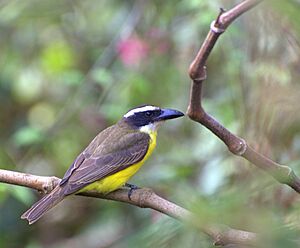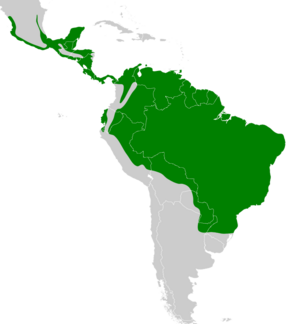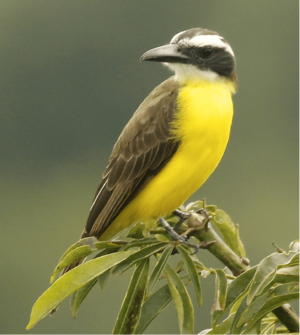Boat-billed flycatcher facts for kids
Quick facts for kids Boat-billed flycatcher |
|
|---|---|
 |
|
| Conservation status | |
| Scientific classification | |
| Genus: |
Megarynchus
|
| Species: |
pitangua
|
 |
|
| Synonyms | |
|
|
The boat-billed flycatcher (Megarynchus pitangua) is a passerine bird. It is a large tyrant flycatcher, the only member of the monotypic genus Megarynchus.
It breeds in open woodland with some tall trees from Mexico south to Bolivia and Argentina, and through to Trinidad.
The nest, built by the female, is an open saucer of sticks. The typical clutch is two or three whitish eggs heavily blotched with brown. These are incubated mostly by the female for 17–18 days with a further 24 days to fledging.
Description
Adult boat-billed flycatchers are one of the largest species of tyrant flycatcher, measuring 23 cm (9.1 in) long and weighing 70 g (2.5 oz). The head is black with a strong white eyestripe and a concealed yellow crown stripe. The upperparts are olive-brown, and the wings and tail are brown with only faint rufous fringes. The underparts are yellow and the throat is white.
The massive black bill, which gives this species its English and generic names, is the best distinction from the similar great kiskadee, which also has more rufous tail and wings, and lacks the olive tone to the upperparts. The call is a strident trilled nya, nya, nya.
Diet
Boat-billed flycatchers wait on a concealed perch high in a tree and sally out to catch insects (such as cicadas) in flight. They will also take invertebrates off the foliage and eat some berries (of the genera Cissus and Miconia), small wild figs and dry green fruits of Cecropia.



